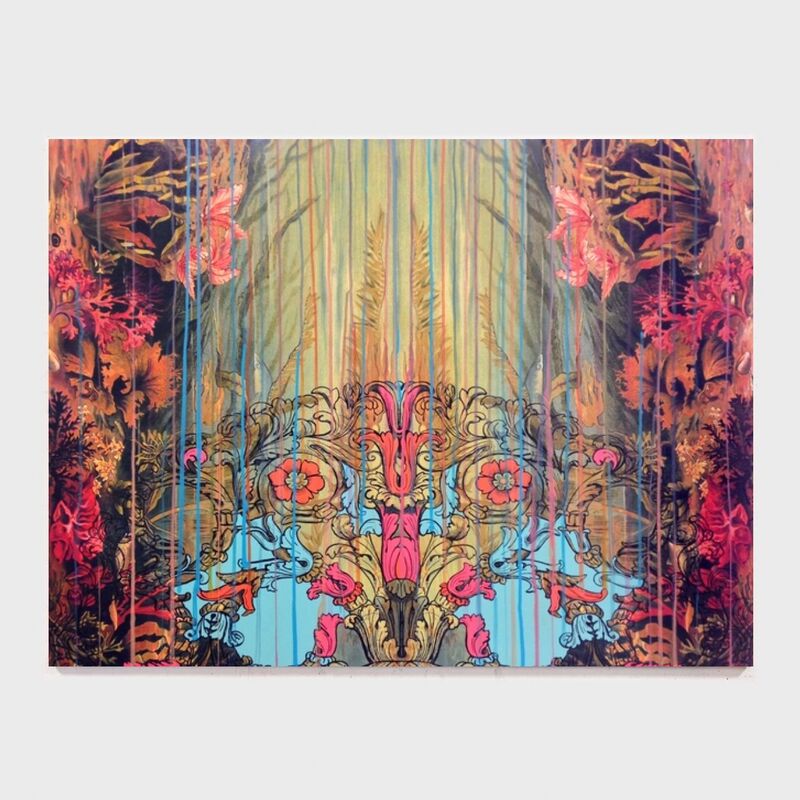Linda Dee Guy
About the Artist
|
Linda Dee Guy is a studio artist in St. Petersburg, Florida, having recently retired after 36 years as Professor of art at Texas Christian University, where she taught lithography, screen-printing, digital printmaking, and mixed media. She received her bachelor's degree from the University of South Florida and an MFA from the Maryland Institute, College of Art.. Linda Dee Guy's work has been included in over 75 group shows, a dozen solo exhibitions, and four invitational international exhibitions including Nagaoka, Japan, and Lima, Peru
|
Artist Statement
|
My grandfather was a sign-painter and a Freemason. Seeing pictures of this very somber and serious man in a Fez filled me with questions. The annual State Fair in Tampa, Florida where I grew up had a midway filled with exotic and strange sideshows. Then there was the Ringling Brothers Circus and later Disney World; it seemed as if I lived amongst exciting fictions and the nature of reality was often in question.
Amongst the influence of pop and conceptual art, I was educated in a university at a time when Gestalt Psychology (i.e. Rudolf Arnheim: Art and Visual Perception) was important. Out of a complicated theory, I fixated upon the concept of the figure-ground relationship. Interpreting the relationship meant that when you consider something (the figure) it can only be understood in the context of its environment (the ground). One’s perception of figure and ground changes with changing situations. Thus I embarked upon a way of thinking that carries me still. My "figures" have developed and changed over the years, one of the first, for example is the dot that developed into forms of water droplets, paint blobs, half-tone dot patterns, balls, and other related shapes. Taking on lives of their own, I have followed them, much like a bouncing ball crossing upon different “grounds.” I cannot pretend to have pinpointed their meaning, but I have found that this “system” has allowed for a wealth of diversity of meanings according to their changing ground. New contextual environments occur every few years resulting in a series of images. For example, most recently, the ground has a historical reference, as in the Radiolaria and Re-Orient Series. Or the ground may be an invented composition as in the Systems Series. With each series of work, there are reoccurring themes centered upon the nature of perception and reality. Re-Orient is the title given to my latest body of work because it employs a reshuffling of historical and current imagery. The historical element in this series is appropriated from my 1910 copy of Owen Jones colored lithographs (chromolithographs) entitled,The Grammar of Ornament. Jones edited this book as a decorative arts resource for industrial artists and designers. In turn, these artisans practiced cultural appropriation leading to enculturation, the process by which an individual learns the traditional content of a culture and assimilates its practices and values. This process continues today in most countries blurring the line between cultural identities, historical truths and ownership. Historical time becomes accepted as one's own time. Because the background contained decorative elements, I designed and incorporated new figures (i.e. a simplified paisley). The paisley shape has continually evolved from complex to simple forms and it's placement changes. Historically it would be included in a rug only to shift today to new and unexpected objects and locations, erasing boundaries between high and low art leading to a tolerance for complexity and diversity. Basically, I am a collagist using drawing, painting, photography, printmaking and most recently, computer applications and inkjet printing. Not wanting to eliminate any medium I like, I choose each based upon what it can achieve both in appearance and meaning. Sometimes it takes 40 hours to make a drawing; sometimes I instantly appropriate historical prints. The composition follows rules of Nature. Finished works often result in a complex hybrid of media asking the viewer to decode which media is used and what are it’s implications. The question of what is real verses what is simulated is presented. |


